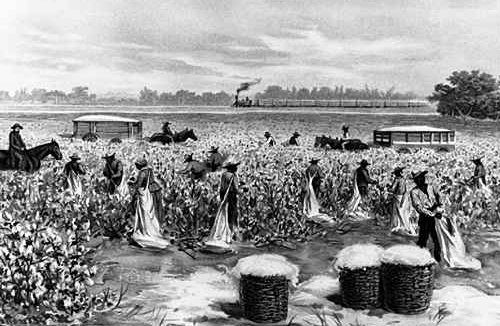Thesis Statement
Field Holler and Work Songs come from the oral tradition of African music. Slaves sang these songs while working on plantations, yelling to one another across fields, participating in communal worship, or at other social occasions.
Introduction
Between the seventeenth and the nineteenth centuries, the infamous labour and field songs were created. Work songs, which were composed by slaves to sing while performing everyday tasks, evolved into the African Diaspora’s most distinctive musical style. These work songs had biblical parables, coded messages, and motivating lyrics. Slaves did this to pass the time while performing mundane duties like harvesting, planting, and hoeing. Work songs included both singing and a combination of rhythmic and physical activity. Field hollers and work songs could also be used to wake up a fellow slave who had fallen asleep or to just express one’s emotions while working.

What are Field Hollers and Work Songs?
A good example of the kind of song needed to coordinate labor is the railroad work song. When hammering in spikes to hold down the rails and ties, workers swing ten-pound hammers in a full circle, hitting the spike squarely, one after the other, without faltering or missing. The most efficient way to do this is to get the workers into a rhythm, which is traditionally provided by chants or songs, such as “Steel Driving Song,” collected from Henry Truvillion by John and Ruby Lomax in Louisiana in 1939. In the same way, realigning whole sections of railroad that have been shifted by trains – rails, ties, and all – requires a crew to tap on the rails with hammers or pull on them with crowbars. If one man taps the rail alone, or five men tap it at different times, it won’t move at all, but if five men tap it at exactly the same time, they can move it. Songs like “Track Callin’” provide the rhythm to get them all tapping or pulling at the same time.
Most field recordings of work songs were not made while the singers were actually working. The remoteness of the typical work locations was inconvenient to the collectors, while the presence of the recording equipment was inconvenient to the workers. In the prison environment, however, the presence of the collector was an interesting novelty to the prisoners, who in any case had no choice but to obey their wardens, and work tasks, such as chopping down trees or hoeing fields, could be undertaken for the purpose of getting a recording. Field recordings made under such conditions, which include “Early in the Mornin’” and “Makes a Long Time Man Feel Bad,” are useful for getting a sense of how the work went together with the song.



Conclusion
The “Night Herding Song” is only one example of a work song incorporated into popular culture. From the earliest days of recorded popular music (especially the blues and country music) work songs have been adapted to fit the styles of singers who then became models for later generations. In 1929, Mississippi John Hurt recorded the popular tune “Spike Driver Blues,” his adaptation of the traditional “Take This Hammer.” The work song “Black Betty,” first documented by the Library of Congress, has been recorded by rock bands Ram Jam (1977), Spiderbait (2004), and The Melvins (2011). Thus, in the driving rhythms and sad lyrics of contemporary pop music, one can still hear echoes of the chopping, hammering, and daydreaming of centuries of American workers.


